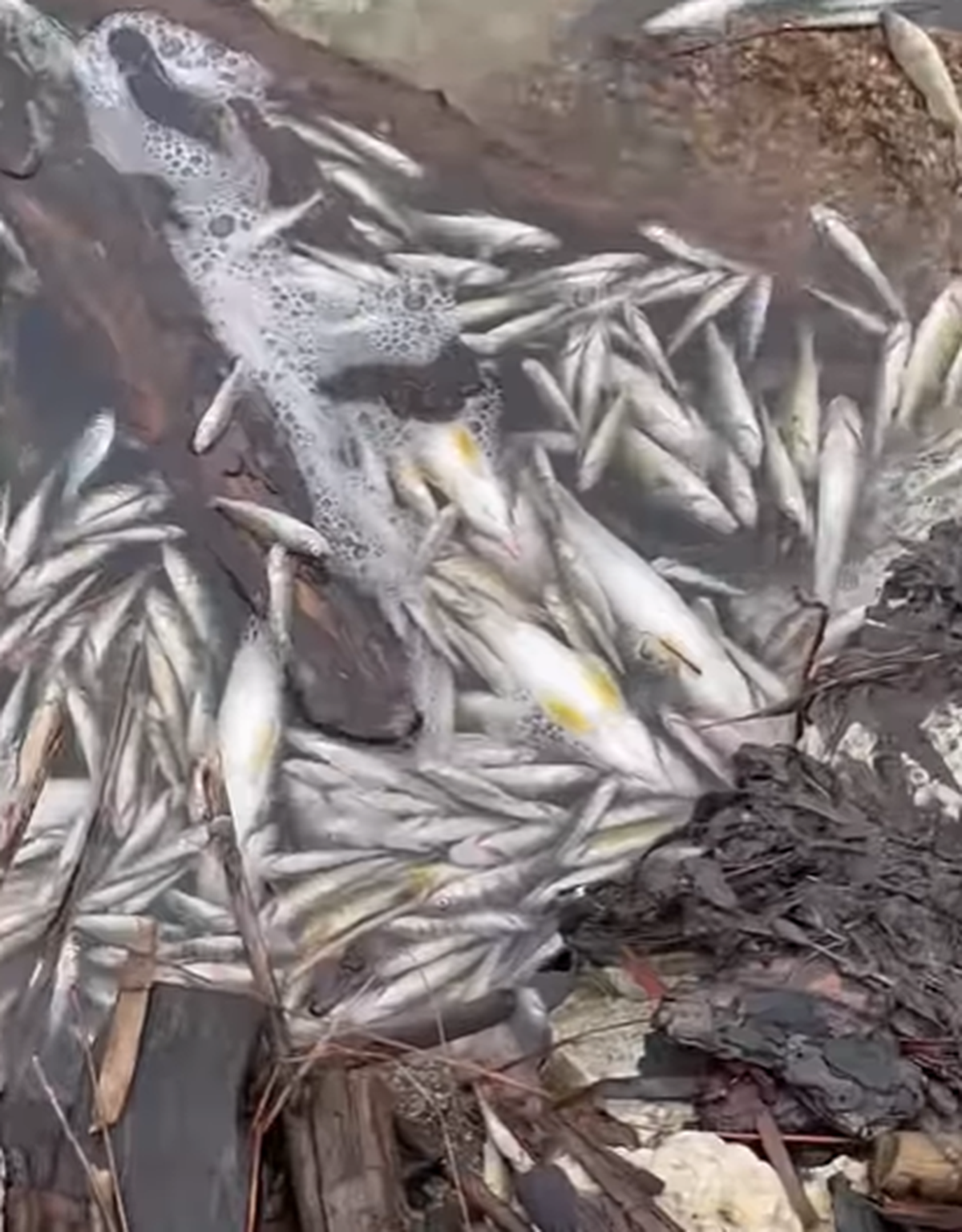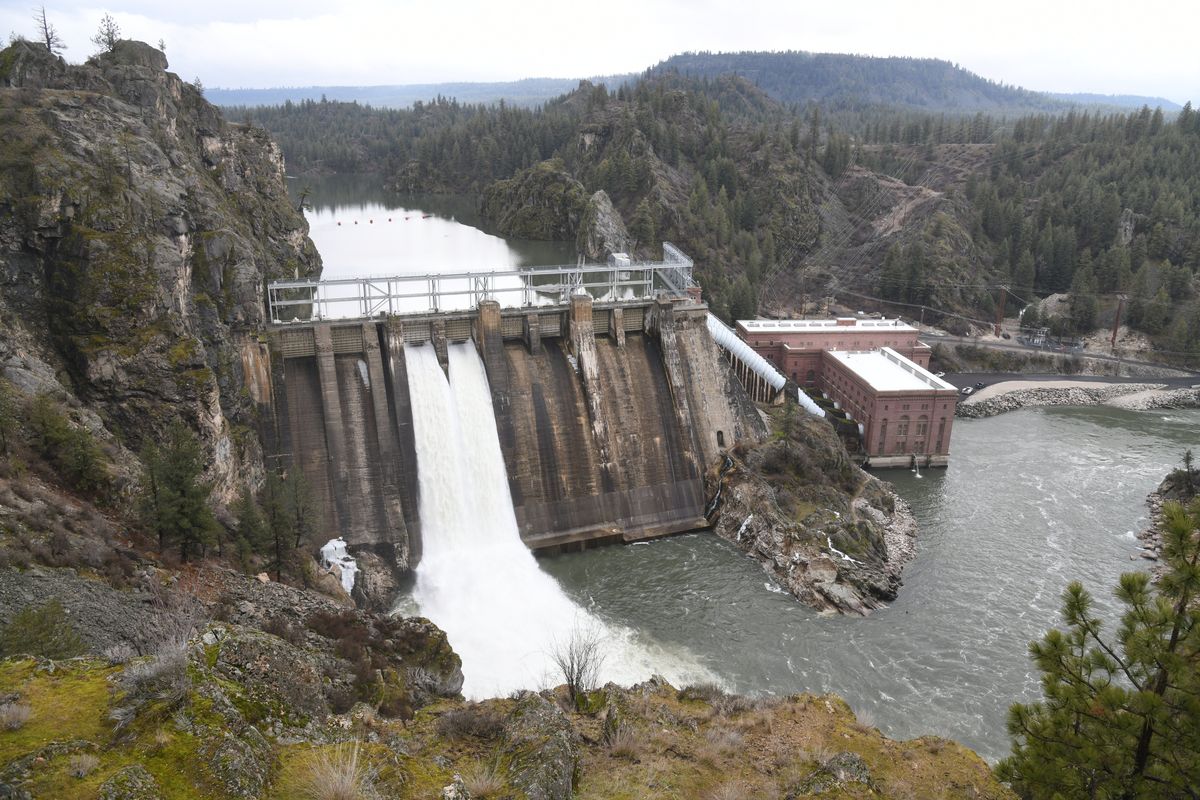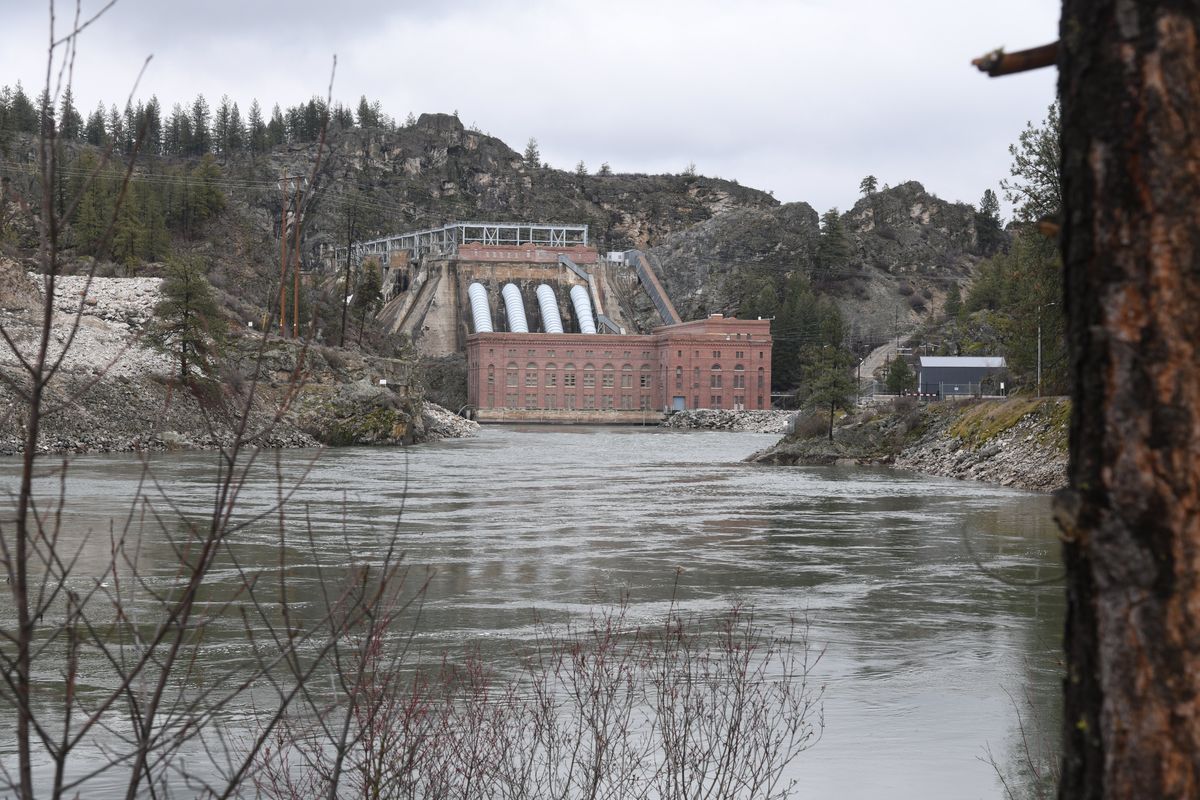Thousands of fish found dead in Spokane River near Long Lake Dam
Thousands of fish were found dead last week near the Long Lake Dam, pictured here on Monday. (James Hanlon/The Spokesman-Review)
When Tom Mclellan stopped by a park near Long Lake Dam last Wednesday to let his dog run, he saw something unusual in the water: a lot of dead fish, their white bellies turned toward the sky.
“We could just sit there and literally watch them float by,” Mclellan said.
Mclellan, who worked at Long Lake Dam for 30 years before retiring in 2022, let people at the dam know what he had seen. Later, he posted a video to Facebook that showed scads of small fish floating belly-up along the shoreline.
Fisheries biologists are estimating thousands of fish died, making the incident the largest fish kill in that part of the Spokane River system in recent memory.
The cause remains a mystery, and fisheries officials from the Washington Department of Fish and Wildlife and the Spokane Tribe are trying to solve it.
Chris Donley, Department of Fish and Wildlife’s Eastern region fish program manager, said Monday morning that most of the fish were found close to Long Lake Dam, which impounds the Spokane River west of Tumtum. Their bodies were found both above and below the dam.
He said officials have ruled out the most common factor in fish kills – low levels of dissolved oxygen – and they’re waiting on test results to see if disease, physical injury or some sort of contaminant is the culprit.
“The whole thing is puzzling,” Donley said.
Rebecca Cook, a biologist with the Spokane Tribe’s fisheries department, said they have “some preliminary ideas” based on bubbles observed on some of the fish, but they need confirmation from lab tests before naming a specific cause.
Samples have been sent to the Washington Animal Disease Diagnostic Laboratory. Cook said she expects to have results this week.
The dying appears to be over for now. Cook said a team of people who went to the lake Monday didn’t find any new dead fish.
The kill came a little more than a month after an oil sheen was observed on the river. The source was determined to be mineral oil spilled by the Inland Empire Paper Co., according to the Department of Ecology. Inland Empire Paper Co. is owned by Cowles Co., which also publishes The Spokesman-Review.
Ecology officials said the mineral oil is not considered harmful to people or aquatic organisms, and Donley said Monday there doesn’t appear to be a clear link between that spill and the dead fish.
No fish were found dead along the Spokane River between the Millwood plant and Nine Mile Dam after the spill, and the fish seen last week were many miles downstream.
“I don’t think we can tie it to that,” Donley said.
Long Lake had been rising in the days before the die off. Avista Utilities had ended its annual drawdown of the reservoir to allow it to fill, and snowmelt and rain swelled the river and bumped water levels behind the reservoir.
That’s normal for this time of year, according to Jared Webley, an Avista spokesperson. He said the company hasn’t been doing anything out of the ordinary this winter, and has conducted annual drawdowns and fills for years and “never had this kind of fish kill before.”
Donley said there had been reports of dead fish in the same area in late December, but that the Department of Fish and Wildlife hadn’t received any additional reports of dead fish until last week.
Most of the fish affected were walleye and perch, with some salmonid species such as whitefish and trout mixed in. The bulk of them were close to Long Lake Dam, Donley said, and a few have been reported at Little Falls Dam – the next impoundment downstream.
Donley added that the fish affected were mostly 3 years old or younger, which means they are generally not the size that anglers would catch and take home. However, if enough young fish have been killed, it “definitely impacts harvest in the future,” he said.
Jule Schultz, the waterkeeper for the Spokane Riverkeeper, said a fish kill of this magnitude hasn’t happened in recent memory.
“We have no idea why this happened,” Schultz said. “What we do know is this appeared to be a very large event.”
Riverkeeper staff went to Long Lake and took a water sample after learning of the reports of dead fish. Schultz said they observed murky, turbid water with some debris, but that alone doesn’t offer any explanation for the kill.
“It’s a lot of fish and this is rare,” Schultz said. “If it does indicate a problem with our river, we need to track that down and figure it out.”


